Gunma and more
- Sort by
- Popularity
- Name
-
Imari ware/Arita ware Imari yaki Arita yaki
- Ceramic
- Saga
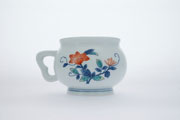
Imari ware and Arita ware are both porcelain produced around the town of Arita, in the Saga prefecture. Imari ware and Arita ware are light and delicate and both have excellent durability because their porcelain is produced from porcelain stone. T…
View more
-
Koishiwara ware Koishiwara yaki
- Ceramic
- Fukuoka

Koishiwara ware (called Koishiwara yaki in Japanese) is a form of pottery produced in the Asakura district of Fukuoka prefecture. Since its creation, Koishiwara ware has evolved to become a practical, beautiful pottery. Koishiwara ware's uniq…
View more
-
Koshu lacquered deer leather Koshu inden
- Other crafts
- Yamanashi
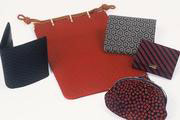
Koshu lacquered deer leather (called Koshu inden in Japanese) is a unique style of leathercraft that was developed in the city of Kofu, Yamanashi prefecture. Koshu lacquered deer leather is unique because of its combination of deer leather and uru…
View more
-
Tobe ware Tobe yaki
- Ceramic
- Ehime
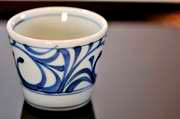
Tobe ware (called Tobe yaki in Japanese) is a form of ceramic ware produced around the town of Tobe in Iyo district of Ehime prefecture. Production began in the middle of the Edo period (1603-1868) and it was registered as a traditional craft by t…
View more
-
Hakata doll Hakata ningyo
- Dolls, kokeshi
- Fukuoka
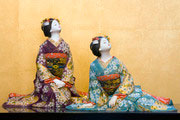
Hakata dolls (called Hakata ningyo in Japanese) are unglazed clay dolls produced in the city of Hakata, in Fukuoka prefecture. The notable features of Hakata dolls are their subtle soft colors, delicately carved expressions, and curves that almost…
View more
-
Karatsu ware Karatsu yaki
- Ceramic
- Saga
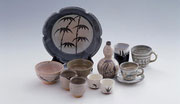
Karatsu ware (called Karatsu yaki) is a form of porcelain produced in the Saga and Nagasaki prefectures. This traditional craft has been produced since the 16th century in various forms, including tea bowls. One of the most notable features of Kar…
View more
-
Kurume traditional resist-dyed textiles Kurume gasuri
- Woven textiles
- Fukuoka
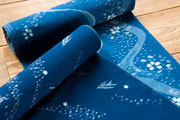
Kurume traditional resist-dyed textiles (Kurume gasuri in Japanese) is a woven cloth produced in and around the city of Kurume, Fukuoka prefecture. The breathability assures coolness in the summer and excellent heat-retaining properties provide wa…
View more
-
Hakata brocade Hakata ori
- Woven textiles
- Fukuoka

Hakata ori refers to the ori or woven cloth produced in and around Hakata, Fukuoka prefecture. Hakata weaving techniques, which originated in China, have shaped this unique cloth. It has been highly regarded for its high quality throughout the age…
View more
-
Echizen traditional Japanese paper Echizen washi
- Traditional Japanese paper
- Fukui
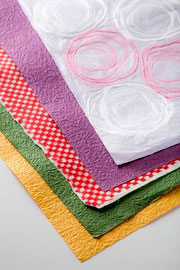
Echizen washi is a Japanese traditional paper made in the basin of the Okafuto river of the Echizen region, Fukui prefecture. Washi is made mostly from the inner bark fibers of plants such as paper mulberry, paperbush, and ganpi. Echizen washi fea…
View more
-
Agano ware Agano yaki
- Ceramic
- Fukuoka
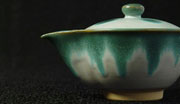
Agano ware (called Agano yaki) is a form of pottery produced around the town of Fukuchi in Fukuoka prefecture. Agano ware is elegant and lightweight, stemming from its development as a tea bowl for use in tea ceremonies. In some cases, the foot o…
View more
-
Echizen lacquerware Echizen shikki
- Lacquerware
- Fukui
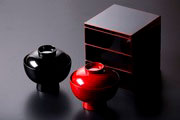
Echizen lacquerware (called Echizen shikki in Japanese) is produced in the area around the city of Sabae in Fukui prefecture. Lacquer is at the center of life in the Echizen district of Sabae, which is known as the city of manufacturing. The notab…
View more
-
Echizen ware Echizen yaki
- Ceramic
- Fukui
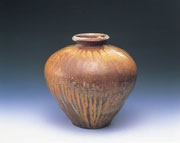
Echizen ware (called Echizen yaki in Japanese) is a type of pottery produced in the town of Echizen, Fukui prefecture. This traditional handicraft comes from one of the Six Ancient Kilns of Japan which along with Bizen, Tamba, Tokoname, Seto, and …
View more
-
Wakasa lacquerware Wakasa nuri
- Lacquerware
- Fukui

Wakasa lacquerware (called Wakasa-nuri in Japanese) is produced in the area around the city of Obama, Fukui prefecture. It is said to have originated in the early Edo period (1603-1868) when a craftsman serving the Obama domain (now the city of Ob…
View more
-
Kiryu brocade Kiryu ori
- Woven textiles
- Gunma

Kiryu brocade (called Kiryu ori in Japanese) is a woven cloth produced in the city of Kiryu, Gunma prefecture. This area has a lush environment with excellent climate and terrain, helping it to be prosperous in the silk industry for years. Kiryu i…
View more
-
Echizen cutlery Echizen uchihamono
- Metal works
- Fukui
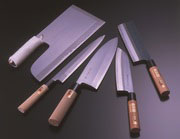
Echizen cutlery (called Echizen uchihamono in Japanese) is produced around the city of Echizen, Fukui prefecture. A double layering technique is used for knives and a rotated steel joining technique for sickles. Double layering is a forging method…
View more
-
Kishu lacquerware Kishu shikki
- Lacquerware
- Wakayama

Kishu lacquerware, also known as kuroe-nuri, is produced around the Kuro-e region northwest of the city of Kainan, Wakayama prefecture. This craft is simple, durable, and practical and has been popular as a household good since the Edo period (160…
View more
-
Kishu bamboo fishing rods Kishu herazao
- Wood, bamboo crafts
- Wakayama
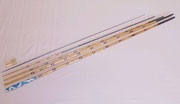
Kishu bamboo fishing rods (called Kishu herazao in Japanese) are produced in the city of Hashimoto, Wakayama prefecture for catching Japanese crucian carp. The bamboos: suzutake, madake, and yadake are cut, left to dry for several years, and only …
View more
-
Ozu traditional Japanese paper Ozu washi
- Traditional Japanese paper
- Ehime
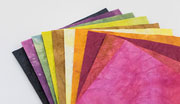
Ozu traditional Japanese paper (called Ozu washi in Japanese) is a handmade paper made in the town of Uchiko, Ehime prefecture. The history of papermaking of Ozu washi dates back to the Heian period (794-1185), and the current style of Ozu washi e…
View more
-
Yame lanterns Yame chochin
- Other crafts
- Fukuoka
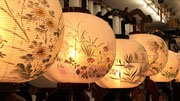
Yame Lanterns (called Yame Chochin in Japanese) are a type of lantern craft produced in the region around Yame, Fukuoka prefecture. This craft has a bamboo frame and a fire box with beautifully painted flowers, birds, and plants. The bamboo frame …
View more
-
Isesaki traditional resist-dyed textiles Isesaki kasuri
- Woven textiles
- Gunma
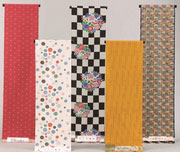
Isesaki Kasuri is a type of woven fabric produced in Isesaki, Gunma prefecture. Mainly used for kimono, this fabric has been admired for its texture since ancient times. Today, neckties and shop curtains called noren in Japanese are also produced.…
View more
-
Koshu crystal and precious stones carving Koshu suisho kiseki zaiku
- Semiprecious stone craftwork
- Yamanashi
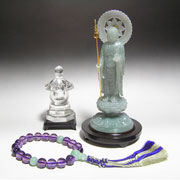
Koshu crystal and precious stones carving called Koshu Suisho Kiseki zaiku in Japanese, are crystal and precious gemstone carvings produced in the city of Kofu, Yamanashi prefecture. Using traditional methods, natural gemstones are carefully cut, …
View more
-
Echizen traditional chest Echizen tansu
- Wood, bamboo crafts
- Fukui
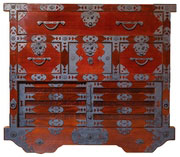
Echizen Tansu are lacquer coated chests of drawers made around Echizen City and Sabae City of Fukui Prefecture. They are mainly made of Japanese zelkova and paulownia, and decorated with iron fittings and lacquer. Japanese zelkova is a hard wood w…
View more
-
Wakasa agate craft Wakasa meno zaiku
- Semiprecious stone craftwork
- Fukui

Wakasa Agate Craft (Wakasa Meno Zaiku in Japanese) is agate craftwork produced around the city of Obama, Fukui prefecture. Agate has been appreciated from olden times as one of the seven treasures that decorated the sublime Buddhist paradise ment…
View more
-
Yame-fukushima Buddhist altar Yame fukushima butsudan
- Household Buddhist altars
- Fukuoka
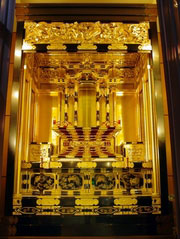
Yame Fukushima Butsudan are Buddhist altars made in Yame City (former Fukushima Town), Fukushima Prefecture. Dotted with many temples, the Yame region had been a place where there were many devout Buddhists since ancient times, which supported the…
View more
-
Kishu traditional chest Kishu tansu
- Wood, bamboo crafts
- Wakayama

Kishu Tansu are masterpieces of traditional woodwork made in an area around Wakayama City, Wakayama Prefecture. Kishu Tansu are so called because the manufacturing technique was established in Kishu, the current Wakayama Prefecture. As high-qualit…
View more
-
Koshu hand-carved seals Koshu tebori insho
- Other crafts
- Yamanashi
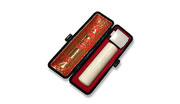
Koshu Tebori Insho are hand-engraved personal signature stamps produced in Kofu City and Fujiyoshida City of Yamanashi Prefecture. Bringing together all of Yamanashi’s engravers, dealers, and material producers, this local industry is unlike those…
View more
- 1

































































































































































































































































































